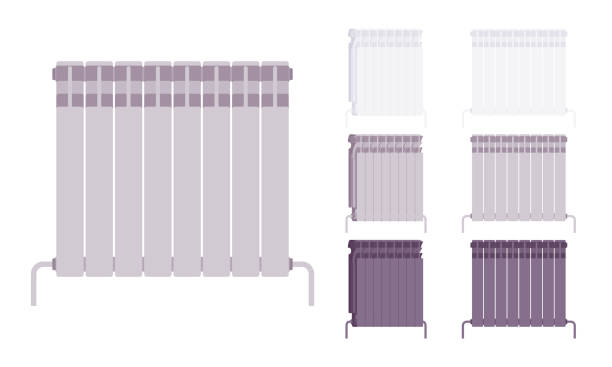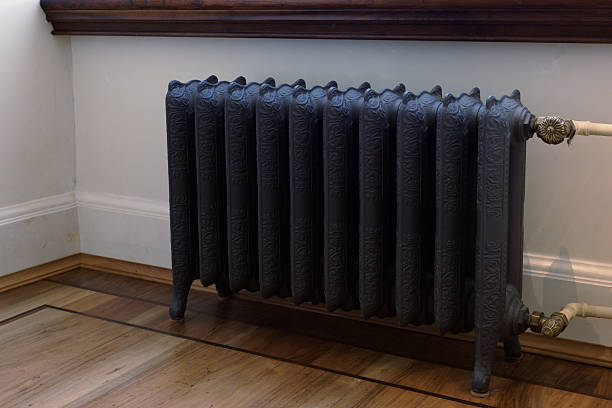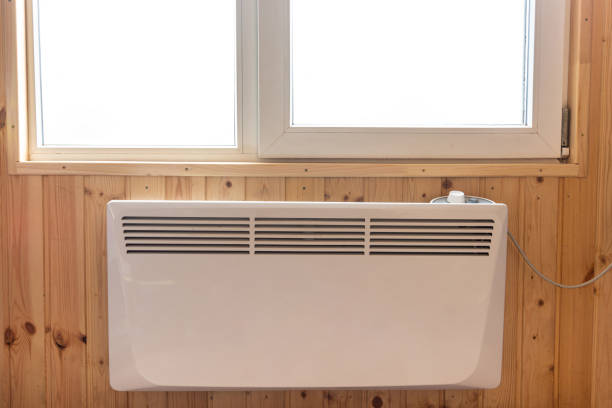When it comes to heating your home, you have a few options when it comes to radiators. While traditional cast iron radiators may be the first thing that comes to mind, there are actually several different types of radiators to choose from, each with its own unique set of benefits. In this article, we’ll explore some of the most popular types of radiators and highlight their key benefits.
Different Types of Radiators: Cast Iron, Aluminium, and Electric
While all three types of radiators – cast iron, aluminium, and electric – have their own unique benefits and drawbacks, aluminium radiators tend to be the most energy-efficient option. However, the most efficient radiator for your home will depend on your specific needs and circumstances.

Cast Iron Radiators

Advantages of cast iron radiators
Cast iron radiators have been around for over a century and are still a popular choice for many homeowners today. These radiators are made of cast iron, which is a durable and long-lasting material. They are also relatively heavy, which helps to distribute heat evenly throughout the room.
One of the main benefits of cast iron radiators is their ability to retain heat for long periods of time. This means that they can continue to radiate heat long after the heating system has been turned off, making them a good choice for homes with fluctuating temperatures. They also have a classic, vintage look that can add character to a room.
Disadvantages of cast iron radiators
However, there are a few drawbacks to consider when it comes to cast iron radiators. They can be expensive to purchase and install, and they may require more frequent maintenance due to their age. They are also relatively heavy, which can make them difficult to move or install in certain locations.
Aluminium Radiators

Benefits of Aluminium radiators
Aluminium radiators are a newer addition to the market and have gained popularity in recent years due to their lightweight and energy-efficient design. Aluminium is a highly conductive material, which means that it can transfer heat quickly and efficiently. This makes aluminium radiators a good choice for homes with large, open spaces or for those looking to reduce their energy consumption.
One of the main benefits of aluminium radiators is their weight. Because they are made of aluminium, they are much lighter than cast iron radiators, making them easier to install and move. They are also more energy-efficient, as they require less energy to heat up and can be turned off sooner, saving you money on your energy bills.
Disadvantages of aluminium radiators
However, there are a few drawbacks to consider when it comes to aluminium radiators. They may not retain heat as well as cast iron radiators, meaning they may not be as effective in maintaining a consistent temperature in a room. They may also be more prone to dents and scratches, which can affect their appearance.
Electric Radiators

Advantages of electric radiators
Electric radiators are a good choice for those who want an efficient and easy-to-use heating solution. These radiators use electricity to generate heat, which means they don’t require a central heating system or fuel source. They are also relatively easy to install, as they can be plugged into a standard outlet.
One of the main benefits of electric radiators is their flexibility. Because they don’t require a central heating system, they can be placed in any room of your home, even those without access to a heating source. They are also easy to use, as they can be turned on and off with the flip of a switch.
Disadvantages of electric radiators
However, there are a few drawbacks to consider when it comes to electric radiators. They can be expensive to run, as they rely on electricity to generate heat. They may also not be as effective at heating larger spaces or rooms with high ceilings, as they rely on convection to distribute heat.
Which material is the most efficient?
When it comes to the efficiency of radiators, it’s important to consider both their heat output and their energy consumption. In general, aluminium radiators tend to be more energy-efficient than cast iron radiators, as they require less energy to heat up and can be turned off sooner. This means that they can save you money on your energy bills in the long run.
Electric radiators can also be energy-efficient, as they don’t require a fuel source and can be turned on and off as needed. However, their efficiency will depend on the cost of electricity in your area and how much you use the radiator.
It’s worth noting that the efficiency of a radiator is also influenced by other factors, such as the size of the room and the height of the ceiling. A radiator that is too small for the space it is heating will not be as efficient as one that is properly sized.
Similarly, a radiator placed too high on a wall may not be as effective at heating a room as one that is closer to the floor.
Which has the highest heat output?

In general, cast iron radiators tend to have the highest heat output, followed by aluminium radiators, and then electric radiators. However, the heat output of a radiator will also depend on its size and the size of the room it is heating. A radiator that is too small for the space will not be as effective at heating the room as one that is properly sized.
When it comes to heat output, all three types of radiators – cast iron, aluminium, and electric – have their own unique characteristics.
Cast iron radiators are known for their ability to retain heat for long periods of time, making them a good choice for maintaining a consistent temperature in a room. They are also relatively heavy, which helps to distribute heat evenly throughout the space.
Aluminium radiators are highly conductive, which means they can transfer heat quickly and efficiently. This makes them a good choice for homes with large, open spaces or for those looking to reduce their energy consumption.
Electric radiators generate heat using electricity, which means they can be turned on and off as needed. They may not be as effective at heating larger spaces or rooms with high ceilings, as they rely on convection to distribute heat.

Conclusion
In conclusion, there are several different types of radiators to choose from, each with its own unique set of benefits. Whether you prefer the classic look of cast iron radiators, the energy-efficient design of aluminium radiators, or the flexibility of electric radiators, there is a radiator option to suit your needs and preferences.
When choosing a radiator, it’s important to consider your budget, the size of your home, and your energy consumption goals. Keep in mind that the right radiator for your home will depend on your specific needs and circumstances.
No matter which type of radiator you choose, it’s important to properly maintain and care for your heating system to ensure it is operating efficiently. This may include regularly cleaning and flushing your radiators, replacing old or damaged parts, and scheduling regular maintenance checks.
By properly maintaining your radiators, you can extend their lifespan and ensure that they are providing reliable and efficient heat for your home.
Read related articles:
